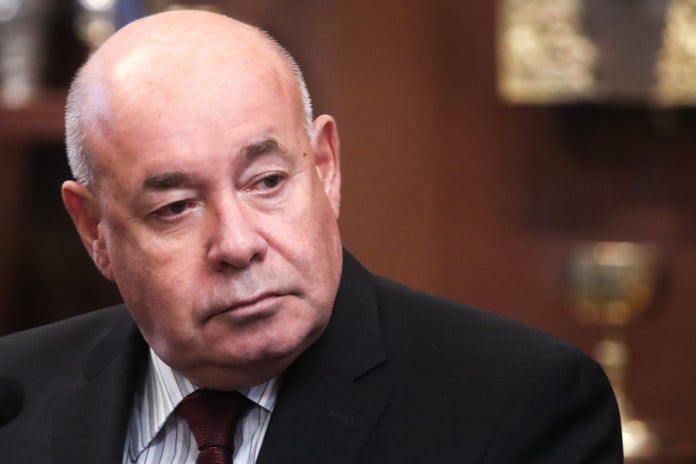The East gives the West a head start by winning competitions for architectural and engineering solutions, which, however, rely on European technologies. Western rationalism is pragmatically borrowed to implement Eastern ambitious designs. But the story of the interaction requires discussion. As well as the competitive capacity of competitors. Especially if you take into account that the Orient is not only delicate, but also diverse.
When today we repeat, like a mantra, the words of the need to turn towards the East, we must not forget that the world civilization connected the West and the East in the ancient world. I believe that in our case it is not worth delving into the inexhaustible well of history, although prehistory may give its clues. The civilizational discoveries of ancient Egypt, Assyria and Babylonia, the State of Urartu, the Kingdom of Israel then germinated in Greek politics and in the Roman Empire. The great Mediterranean culture absorbed all the best created by human genius in these regions, not knowing that there would come a moment not only of synthesis, but also of systemic delimitation between East and West. It is enough to visit the National Archaeological Museum of Athens to see how the sculptural masterpieces of ancient Egypt from the 8th-7th centuries BC. e. giving artistic impetus to the Greek masters, flowing into ancient sculpture in its highest examples.
Remember that the world civilization connected the West and the East in the ancient world
The campaigns of Alexander the Great in the East, as is known, ended tragically, but his desire to conquer India had an impact on the processes of civilization in the Hellenistic world. There are known, though very rare, contacts between the Roman Empire and China in the early modern era. Despite the fact that they were extremely difficult because of Parthia and the Kingdom of Kushan, which separated the large states, the two capitals, located at the polar ends of the Eurasian continent, were interested in each other. The Chinese called the Roman and later Byzantine Empire Daqin, which means Great Qin, and the Romans called China and the Chinese Seres, which means “land of silk”.
The East in its Islamic form came to Europe in 711-718, when, after the conquest of Syria and Egypt, the Arabs, having created a united state in Arabia, captured the Iberian Peninsula. And today, modern Spain captivates with fantastic grotesques that combine Catholicism and Islam, Arab and European artistic tradition.
Yes, and in Rus’ relations with the East were built in different directions. They are not reducible to the penetrating influence of the Genghisids and the Golden Horde. It was not enough for the insatiable and curious Russian soul “to go beyond the three seas”, it sought to master the entire universe.
Oriental themes and motifs have played an important role in European culture since the Renaissance in fine art, literature and dramaturgy. However, even in the Middle Ages, at the time of the Tang dynasty, Chinese ceramics found their way to the Middle East, and from there to Europe. In addition, Chinese craftsmen made ceramic objects for sale in the Asian Mediterranean. And if you look at the large tricolor figures of camels, guards, merchants, spirits, created at the same time, in the VII-IX centuries of the new era, you will see that they are close to those that will appear in the West at the beginning of the second millennium of the new era. An exceptionally diverse display of Chinese ceramics from the Paleolithic era to the first half of the 20th century, displayed at Beijing’s Imperial Gugong Museum, is visible evidence of how East and West exchanged artistic ideas, either ahead or catching up. The “Chinese style” was extremely popular in Europe in the 18th century. The passion for them did not exceed the Russian monarchs. Suffice it to recall the Chinese Palace of Peterhof.
But it is no coincidence that our Chinese colleagues, who have much to be proud of in all sectors of the economy, in science, education, culture, do not hide the fact that the modern development of art in China is widely associated with and Soviet masters. An outstanding sculptor, director of the National Art Museum of China, Wu Weishan, said during our meeting that the traditions of the Russian art school to this day have a serious impact on the formation of a modern creative context in China. Not only the Russian tradition, but also the European tradition as a whole influenced new generations of Chinese artists.
The mutual enrichment of cultures and civilizations is always a two-way street. Especially if that road has been forged for centuries through trial and error, but with an understanding of the necessity of the process itself.
The Russian project “Greater Eurasia” is interfaced with the Chinese concept “One belt – one road”
It is wrong to believe that the current turn of Russia towards the East is only linked to the fact that the Asian countries needed our hydrocarbons. The Russian project “Greater Eurasia”, which is associated with the Chinese concept “One Belt – One Road”, will require the consolidation of intellectual efforts in all areas of development – in the political, economic, cultural and humanitarian spheres. A conscious counter-movement will connect different civilizational approaches, give energy to move forward into the future.
But, as you know, the movement to the right begins with the left foot. By going to India, you can go to America. You have to remember that. And don’t make unnecessary moves or unintentional mistakes.
Read the Latest Science and Technology News Today on The Eastern Herald.


